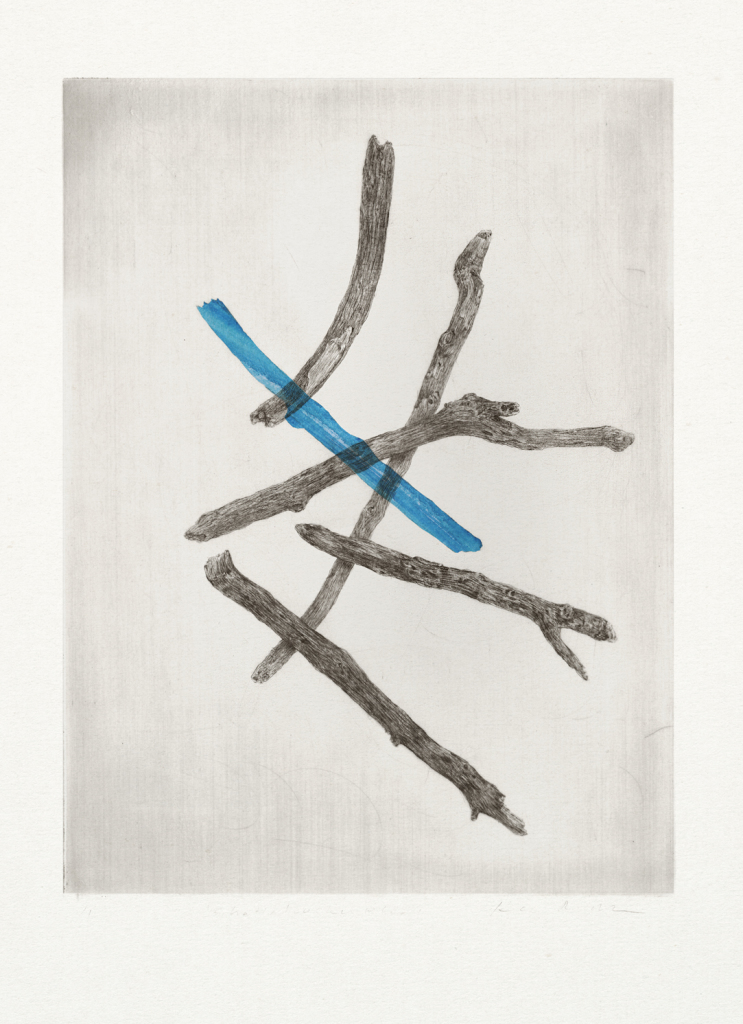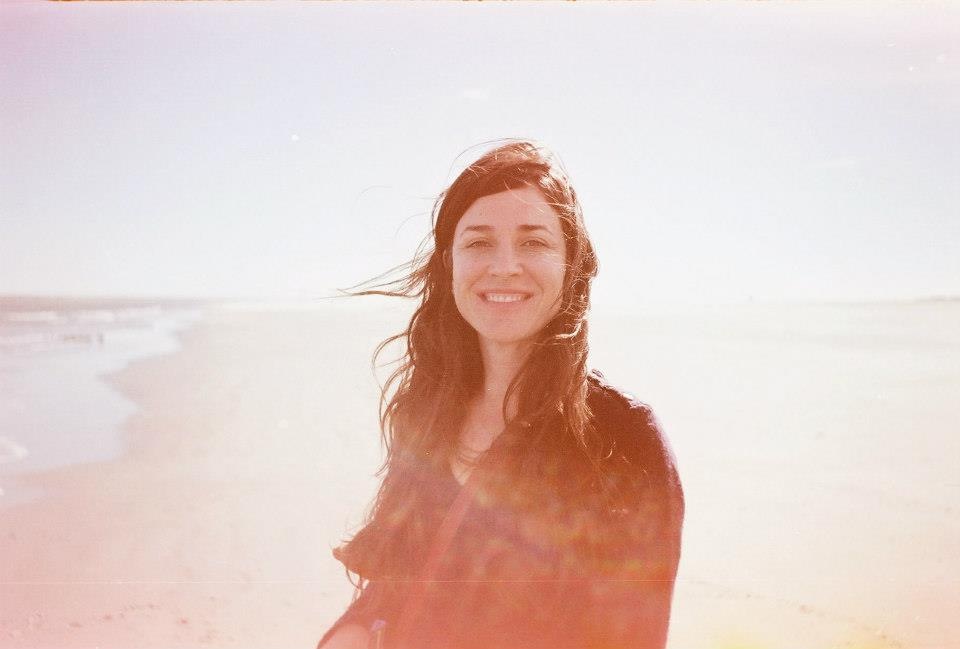 After being exposed to the art of printmaking after a few college classes, something clicked for Katie Ridley Murphy. Her printmaking calling got louder as she found herself involved with the Atlanta Printmaker’s Studio eight years ago, where she could mix her loves of drawing and printing. Her hard work paid off when she was chosen to be part of the 2014 Emerging Artist Residency program at the Studio. Murphy makes her nature-inspired prints with imprints of real life branches and objects she finds while foraging in her backyard. Her work has been featured in national outlets including KINFOLK, San Francisco Chronicle, Atlanta Magazine, The Oxford American and Random House, among others.
After being exposed to the art of printmaking after a few college classes, something clicked for Katie Ridley Murphy. Her printmaking calling got louder as she found herself involved with the Atlanta Printmaker’s Studio eight years ago, where she could mix her loves of drawing and printing. Her hard work paid off when she was chosen to be part of the 2014 Emerging Artist Residency program at the Studio. Murphy makes her nature-inspired prints with imprints of real life branches and objects she finds while foraging in her backyard. Her work has been featured in national outlets including KINFOLK, San Francisco Chronicle, Atlanta Magazine, The Oxford American and Random House, among others.
Murphy positions the branches in complex layouts to highlight their qualities in the illustrations, often in black and white. When she’s not creating, Murphy loves to spend time in the mountains with her husband, artist Jason Murphy, and their 5-year-old twins.
Here, Murphy talks to CommonCreativ about foraging, focusing on art vs. promotion and a possible foray into sculpturing.
CommonCreativ: What brought you to Atlanta?
Katie Ridley Murphy: I was visiting my sister the summer after graduating from Ringling College of Art and Design in 2000. Following my sister and learning that one of my favorite artists, Jason Murphy, lived in Atlanta as well, I just made a impulsive decision, opening a phone book and calling around for illustration positions. I was hired at the Atlanta Journal-Constitution the following week.
CC: How did you end up on the printmaker path?
KRM: I took a couple of classes in college and loved the process of mixing drawing with the physical aspect of working with machinery. The idea of printmaking never left me. I found Atlanta Printmaker’s Studio about eight years ago while doing some printmaking sporadically. I was accepted into the residency program this past year and since then I have changed my direction completely, becoming much more focused on printmaking.
 CC: You often use objects from nature to create your illustrations. Do you go on walks and just grab what catches your eye?
CC: You often use objects from nature to create your illustrations. Do you go on walks and just grab what catches your eye?
KRM: I’m constantly looking for discarded antiques to be repurposed, relative to the way I use nature in my art. I feel like there is so much life in the things we already have around us and I am compelled to take advantage of these things in order to express myself. Currently I am collecting sticks, rocks and plants to use in my work. The majority of the sticks I have collected are from trips Jason and our twins, Jackie and Chloe, take to the mountains of Tennessee and Georgia. One of my favorite bunch of sticks was found alongside Sweetwater Creek. The sticks had been stripped of their bark and were weathered and grey, having a fragile bone-like feel. The objects I collect all connect to memories, documenting past moments and places we’ve been together.
CC: As you create patterns with your findings, what’s your creative process?
KRM: My husband and I bought a 1920s house in East Point, just outside of downtown Atlanta. We fell in love with it because of the detached garage, which we remodeled into our studio. In the middle of the studio sits a 15-foot hand-made etching press we purchased from a local printmaker. There’s not much to my ritual of drawing. I go out with a cup of tea and open one of the large barn doors in order to let the breeze and natural light in. I sit at my desk in silence staring outside listening to the sounds of birds, our wind-chime and my thoughts until I get lost in an idea. I arrange rocks and drop sticks over and over until a pattern happens that I respond to. Sometimes this takes hours while other times it just happens the first [time] round. Then, I’ll focus on the details which complete the design.
CC: Your style is often simple in design yet complex in detail. How did you develop that and how has it evolved?
KRM: Working at The Atlanta Printmakers Studio has enabled me to create more of my ideas at a faster rate than when I work with graphite drawings. I can remember when I was little, looking at one of Richard Scary’s children’s books and responding to how everything had been arranged on the page with no background. Just white. I remember piles of bananas, pencils and boards of wood, an d how each object took me away into its own life without being influenced by its surroundings. My art has somehow taken on this detailed arrangement now, telling my life story within barely-balancing objects, but complete within its still life.
 CC: Tell me a about your accessory line of scarves and handkerchiefs.
CC: Tell me a about your accessory line of scarves and handkerchiefs.
KRM: It came about when I was silkscreening a drawing I did last year titled “Bundles” on fabric in a seamless pattern. The design made the shape of a scarf and that’s where the idea of wearable art happened. I would love to continue making textile art by printing on linen and silks next. I also would love to collaborate with a clothing designer or do wallpaper.
CC: How do you choose when to use color?
KRM: Using color depends on my mood. I go back and forth from using graphite black and other times a little color. Sometimes it’s accidental, while other times it might be what the design needs. I try to use materials made from nature—good cotton paper, fabric, wood and soy-based inks.
CC: What inspires you?
KRM: What inspires me is spending time with my family, being outside in silence, collecting plants for my garden, the hunt for junk, and taking classes to broaden my knowledge while being exposed to how others work.
 CC: Any dream collaborations?
CC: Any dream collaborations?
KRM: I would love to meet Mari Andrews and Kiki Smith. Their work sparked my excitement towards art to continue after having twins.
CC: Tell me about your stick zine.
KRM: My stick zine was designed and published by my husband, Jason Murphy. He runs a small press here in Atlanta in which he collaborates with other artists, but mostly publishes his own work. My husband had the idea to design my art as a zine. It’s a neat and inexpensive handmade book of art to take with you. No words—just meditative pictures. It’s a great way to make art that can be collected inexpensively.
CC: How do you promote yourself as an artist?
KRM: Although the hunt for galleries or magazines to take on your work can be both discouraging and exciting, I am currently more focused on the process of making art and less on promotion. I just keep making things for myself, which in turn will hopefully lead to more and more opportunities. Jason and I are currently working on pop-up shops around town later this year at Beep Beep Gallery and Young Blood Boutique. It’s a great way to just keep getting your work in front of people.
CC: What are your favorite projects in Atlanta?
KRM: I’m always happy to see music and art shows at the Goat Farm. The atmosphere of the crumbling building, chickens running wild and creatives reminds me of the Art Farm, an Atlanta collective and shared studio complex which closed years ago. The Atlanta Zine Fest is a really great up-and-coming organization as well.
CC: What’s next for you?
KRM: Larger prints, connecting more drawings with printmaking and possibly sculptural pieces.
You can see more of Katie Ridley Murphy’s work on her portfolio site.







